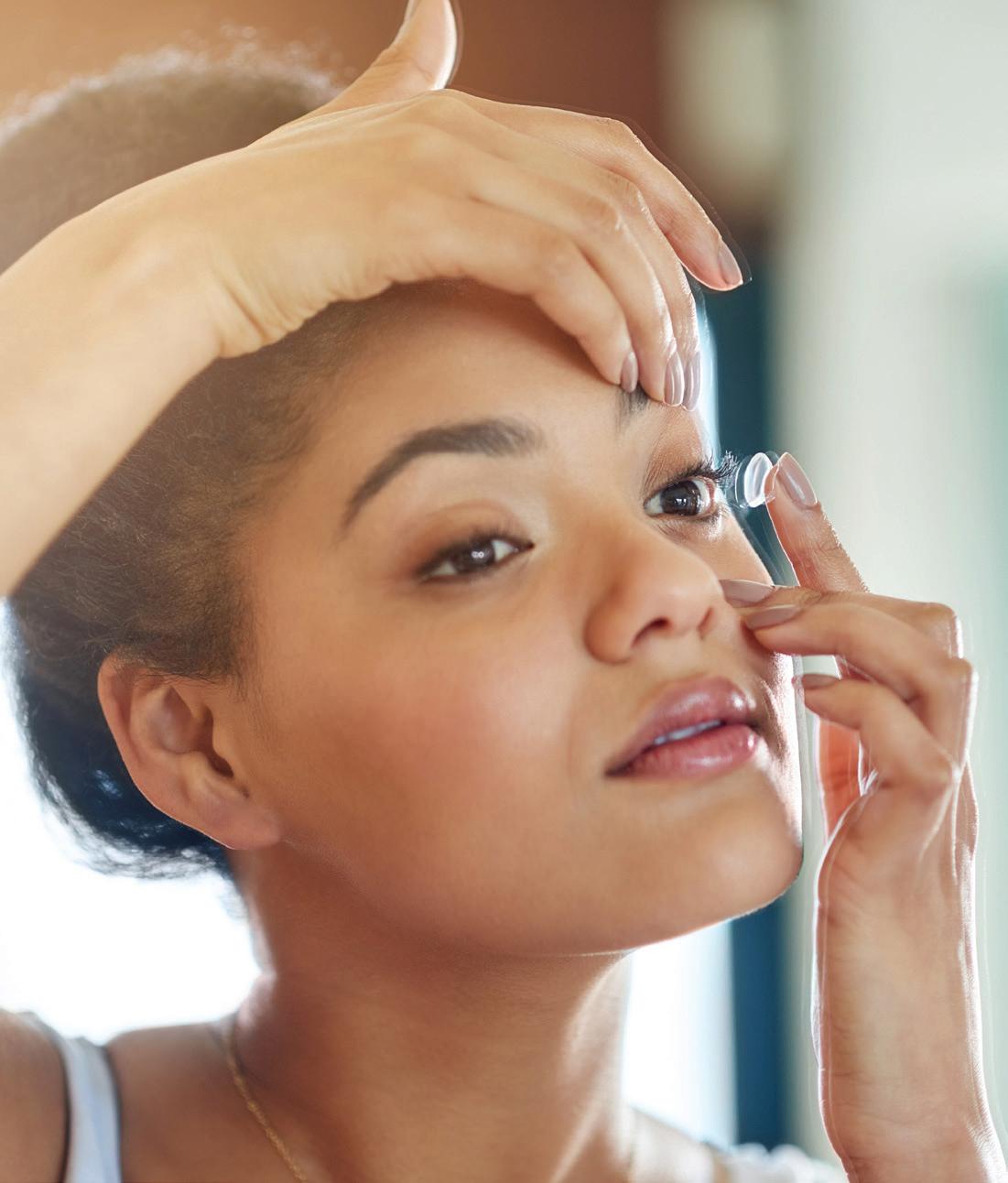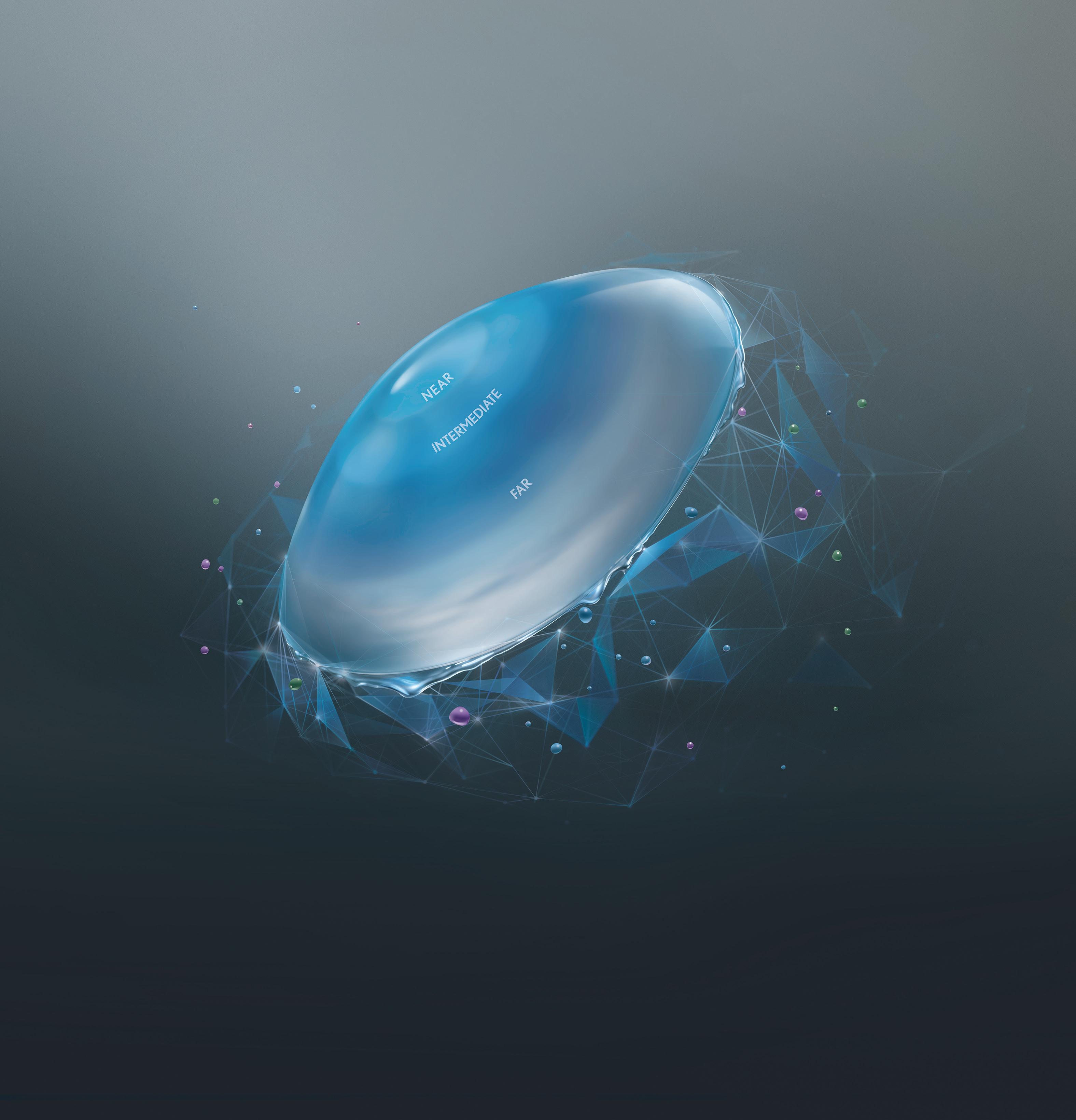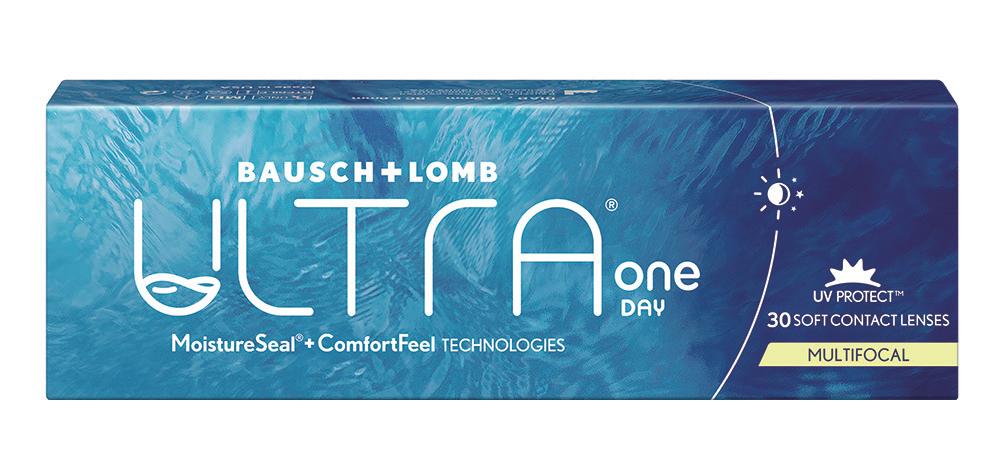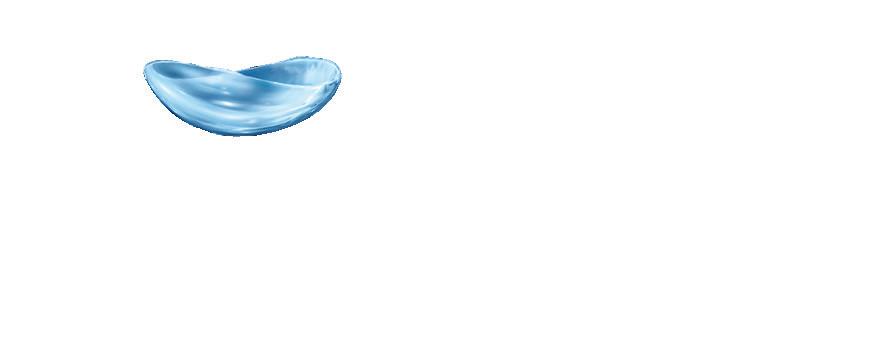EYEING THE MARKET:
How Contact Lens Technologies are Shaping the
Simon Hanna
–
National Professional Services Manager – Bausch & Lomb.
A 2024 market research study of 533 Australians over the age of 40 found that 91% of those surveyed required reading correction, with two-thirds of respondents also requiring visual aids for computer work.1 In an ageing population, where almost 1 in 2 patients may potentially suffer from symptoms of presbyopia, it is imperative that all relevant and useful visual aids and solutions are available and offered to this demographic.2
Present day contact lens wearers live and work in a range of visually demanding environmental surroundings that can impact the overall contact lens wearing experience. For many this is comprised of the prolonged time spent each day looking at various digital devices, which we know can lead to reduced blinking frequency and symptoms of dryness and discomfort.3, 4
This is particularly exacerbated for presbyopic contact lens wearers due to the additional physiological and hormonal changes that occur over time. Thus, it will come as no surprise, that discomfort along with poor vision are the main reasons 1 in 3 contact lens wearers over the age of 40 drop out of CL wear. 7-8
The same research showed that when asked about what influences their choice of vision correction, overwhelmingly, the recommendation of the optometrist was 2.5x to 3x that of self-research. This highlights the important and pivotal role that Eye Care Professionals (ECP’s) play in guiding patients with respect to their optical aid choice.
Studies have explored the impact presbyopia and presbyopic vision correction have on individuals’ day-to-day activities and their quality of life. Individuals expressed several difficulties related to reading text in a small font size, reading at a distance when presbyopia becomes more severe and difficulties using various digital devices. Additionally, impacts of presbyopia relating to specific sports, leisure and daily living activities were also cited; including difficulties cycling, walking, playing the piano, driving, recognizing people, putting makeup on and even eating.9
The most frequently reported vision correction option amongst presbyopes were spectacles, and several impacts were also found to be associated with this. This included feeling “fed up” with having to use reading glasses, feeling unhappy with varifocal glasses, having to remove glasses or look under them whilst doing close work and the pressure of glasses over the nose or behind ears.9, 10
THE ULTRA SOLUTION
Bausch & Lomb Ultra® for presbyopia and Bausch & Lomb Ultra® ONE DAY multifocal contact lenses support in addressing these needs. With their proven technologies, both Bausch & Lomb Ultra® for presbyopia and Bausch & Lomb Ultra® ONE DAY provide outstanding end of day comfort and vision to help offer patients a viable alternative to spectacles for their presbyopic correction.11, - 13
The advanced lens design also combines the revolutionary comfort of the samfilcon A and kalifilcon A materials made incorporating the innovative MoistureSeal®11 and Advanced MoistureSeal® Technologies13, which locks in 95% and 96% of contact lens moisture respectively for a full 16 hours, providing outstanding comfort from morning to night.11, 13
In addition, the Bausch & Lomb Ultra® ONE DAY lens also boasts the ComfortFeel Technology13, a technology inspired by the TFOS DEWS II study , which provides a unique combination of eye health ingredients to support and balance the ocular surface and maintain homesostasis.13
The 3-Zone ProgressiveTM Design incorporated within both of these lenses allows for clear vision across all distances and a seamless, smooth transition between 3 zones for easy adaptation.15-17 This is because, while conventional multifocal contact lens designs have traditionally relied on refractive error, or refractive error and pupil size, with the 3-Zone ProgressiveTM Design, Bausch & Lomb researchers integrated a broader investigational approach and took 7 key biometric variables into account, including: refractive error, pupil size, higher order aberrations, corneal curvature, axial length, anterior chamber depth and residual accommodation measured across 9 viewing distances ranging between 25cm and 6m.


Patient communication tools for the practice play an important part in the patient’s satisfaction with their vision correction purchase decision. In a study involving 64 patients participating in focus groups, it was noted that there was a preference for information to be relevant and applicable to the patient’s own eye care needs. In addition, participants expressed a desire for both written and verbal information, that is jargon-free .
Bausch & Lomb’s Ultra® ONE DAY multifocal contact lenses are associated with high levels of patient satisfaction. According to the results of a clinical study, Bausch & Lomb Ultra® ONE DAY multifocal contact lenses provided clear vision at near and far distances, as well as clear vision when driving at night, in 80% and 75% of patients, respectively; with 82% agreeing the lens provides clear vision from near to far seamlessly throughout the day.17
Additionally, a clinical study has also demonstrated the resilience of the samfilcon A material in offering high levels of sustained comfort and vision performance over a period of 12-months of wear with monthly replacement.
Both monthly and daily modalities provide exceptional fitting success when the practitioner follows the fitting guidelines16. The simplified two Add options available to practitioners provides a high rate of success with the Bausch & Lomb Ultra® ONE DAY multifocal contact lenses. showing 87% of patients being successfully fit in one visit and 99% in two visits .
A field observation study conducted in 2023 on patients wearing Bausch & Lomb’s Ultra® ONE DAY multifocal contact lens showed that out of the 290 wearers, the majority agreed the lens felt incredibly soft, smooth and weightless (91%) and allowed them to effortlessly move from various tasks throughout the day (90%).17
The innovative kalifilcon A material combines a system of proven technologies to provide patients with a lens designed to meet the needs of the ageing eye, including a complete system of high oxygen, low modulus, easy handling and UV blocking.†13
90%
Agreed the lenses are comfortable17
80%
Agreed the lenses help prevent dryness17
3/4
Agreed the lenses help prevent eyes from feeling tired and fatigued17
Bausch & Lomb’s 3-Zone Progressive* ™
Design coupled with the simplified easy fitting process provides a successful fit for many patients21
Proven technologies including Advanced MoistureSeal® and ComfortFeel Technology combine to meet the needs of the ageing eye13
A complete design of high oxygen, low modulus, easy handling and UV Blocking13†
* Bausch & Lomb Ultra® ONE DAY multifocal contact lenses only
Only Bausch + Lomb ULTRA® ONE DAY Multifocal silicone hydrogel contact lenses combine the proven 3-Zone Progressive™ Design with a complete system of moisture and comfort technologies to provide effortless clarity and seamless transitions from near to far 1 Advanced MoistureSeal® and ComfortFeel Technologies are designed to deliver long-lasting moisture and outstanding comfort for a full 16 hours of wear2,3 and help maintain ocular surface homeostasis 3 Go beyond your patient’s lifestyle and contact lens constraints 4
References: 1. Results from a 20-site, 3-week study of Bausch + Lomb (kalfilcon A) Daily Disposable Multifocal contact lenses on 294 habitual multifocal soft contact lens – B&L Data on file (2023). Study 916: A Study to Evaluate the Product Performance of a New Silicone Hydrogel Multifocal Contact Lens – Topline Results. 03 Mar 2023. Sponsored by Bausch & Lomb. 2. B&L Data on file (2021). Study 893: Product Performance Evaluation of a Novel Silicone Hydrogel Contact Lens: Kalfilcon A Patient Comfort and Vision Outcomes for subset of patients who reported wearing their lenses for 16 or more hours per day. 19 Feb. 2021. Sponsored by Bausch & Lomb. 3. Rah, M. Ocular Surface Homeostasis & Contact Lens Design. (2021) https://viendolavida.com/wp-content/uploads/2021/12/BL-ULTRA-ONE-DAY-tech-talkOcular-Surface-Homeostasis.pdf . Accessed 28 Aug 2023. Sponsored by Bausch & Lomb. 4. B&L Data B&L Data on file (2019). Kadence International. April 2019. Results of a consumer symptoms survey of 318 silicone hydrogel daily disposable contact lens wearers. Sponsored by Bausch & Lomb. © 2024 Bausch & Lomb Incorporated. Bausch + Lomb ULTRA® ONE DAY Multifocal is a trademark of Bausch & Lomb Incorporated or its affiliates. Bausch & Lomb (Australia) Pty Ltd ABN 88 000 222 408. Level 2, 12 Help Street, Chatswood, NSW 2067, Australia (Ph. 1800 251 150) UOD.0008.AU.24
1 Data on File. 2024 B&L Market Research. Sponsored by B&L.
2 Australian Institute of Health & Welfare – Release Date: June 2023 (www. aihw.gov.au/reports/australias-health/profile-of-australias-populationaccessed 14th March 2024)
3 Data on File. Rah, M., 2016. Blink Rate Review. Rochester. Sponsored by B&L.
4 Coles-Brennan, C., Sulley, A., Young, G. Review: Management of digital eye strain. Clinical and experimental optometry 2019; 102: pp18-29.
5 Kovács, I. (2022) ‘Effects of ageing on the eyes’, Developments in Health Sciences, 4(1), pp. 21–25. doi:10.1556/2066.2021.00047.
6 Gorimanipalli, B. et al. (2023) ‘Hormones and dry eye disease’, Indian Journal of Ophthalmology, 71(4), pp. 1276–1284. doi:10.4103/ijo.ijo_2887_22.
7 Data on file. Vision Needs Monitor (2013). Sponsored by B&L, Alcon and J&J.
8 Rueff, E.M. and Bailey, M.D. (2017) ‘Presbyopic and non-presbyopic contact lens opinions and vision correction preferences’, Contact Lens and Anterior Eye, 40(5), pp. 323–328. doi:10.1016/j.clae.2017.03.010.
9 Wolffsohn, J.S. et al. (2020) ‘Social media listening to understand the lived experience of presbyopia: Systematic search and content analysis study’, Journal of Medical Internet Research, 22(9). doi:10.2196/18306
10 Kandel, H. et al. (2017) ‘Impact of refractive error on quality of life: A qualitative study’, Clinical & Experimental Ophthalmology, 45(7), pp. 677–688. doi:10.1111/ceo.12954
11 Schafer J. et al.; Use of a novel extended blink test to evaluate the performance of two polyvinylpyrrolidone-containing, silicone hydrogel contact lenses. Clinical Ophthalmology 12, p819 (2018). Sponsored by B&L.
12 Uçakhan, Ö.Ö et al. Clinical Performance of Samfilcon A Contact Lenses in Intensive Digital Device Users: A Multicenter, Prospective Clinical Study; Ophthalmol Ther 10, p957 (2021). Sponsored by B&L.
13 Rah, M. Ocular Surface Homeostasis & Contact Lens Design. (2021) https:// viendolavida.com/wp-content/uploads/2021/12/BL-ULTRA- ONE-DAYtech-talk-Ocular-Surface-Homeostasis.pdf. Accessed 28 Aug 2023. Sponsored by B&L.
14 Jones L et al. TFOS DEWS II management and therapy report. Ocul Surf. 2017;15(3):575-628
15 Reindel W. T et al; Impact of Multifocal Power Profiles on Visual Outcomes; Contact Lens Spectrum 31, Special Edition P32 (2016). Sponsored by B&L.
16 Karpecki, P.M. et al; Leading with Innovation: Setting up Presbyopes for Multifocal Success. Review of Optometry (2017) https://www. reviewofoptometry.com/CMSDocuments/2017/2/BL_Presbyopiai.pdf. Sponsored by B&L.
17 B&L Data on file (2023). Study 916: A Study to Evaluate the Product Performance of a New Silicone Hydrogel Multifocal Contact Lens - Topline Results. 03 Mar 2023. Sponsored by B&L.
18 Kingston AC, Cox IG. Predicting through-focus visual acuity with the eye’s natural aberrations. Optom Vis Sci 2013 Oct;90(10):1111-8. Sponsored by B&L.
19 Fiona Fylan,F and Grunfeld, E. Information within optometric practice: comprehension, preferences and implications. Ophthal. Physiol. Opt. 2002 22: 333–340.
20 Reindel, W, et. al. Patient Comfort, Vision, and Cleanliness Over 12-Months of Samfilcon A Lens Wear. Sponsored by B&L. AAO Poster (2018).
† UV Warning — Helps protect against transmission of harmful UV radiation to the cornea and into the eye. WARNING: UV-absorbing contact lenses are NOT substitutes for protective UV-absorbing eyewear such as UV-absorbing goggles or sunglasses because they do not completely cover the eye and surrounding area. The effectiveness of wearing UV-absorbing contact lenses in preventing or reducing the incidence of ocular disorders associated with exposure to UV light has not been established at this time. You should continue to use UV-absorbing eyewear as directed.
21 B&L Data on file (2023). Study 916: A Study to Evaluate the Product Performance of a New Silicone Hydrogel Multifocal Contact Lens - Updated fit claims data. Sponsored by B&L.














